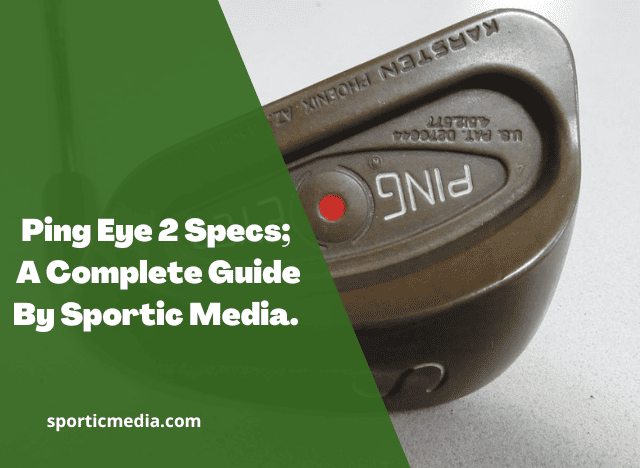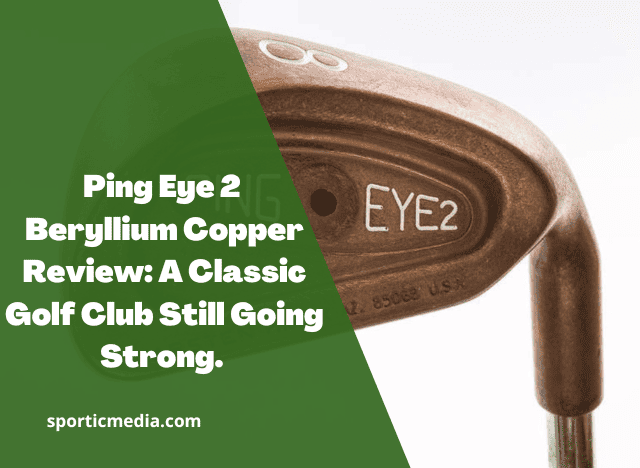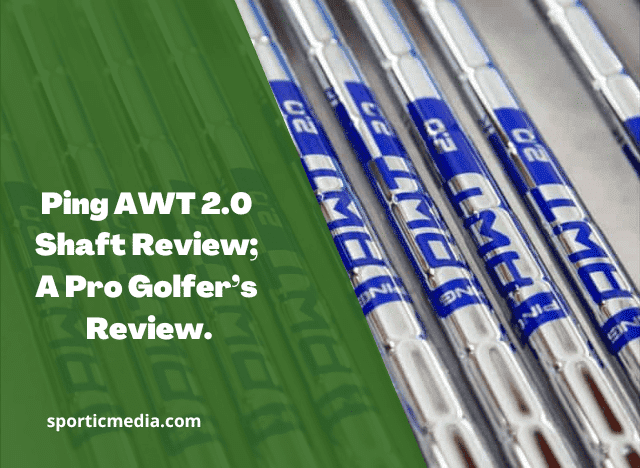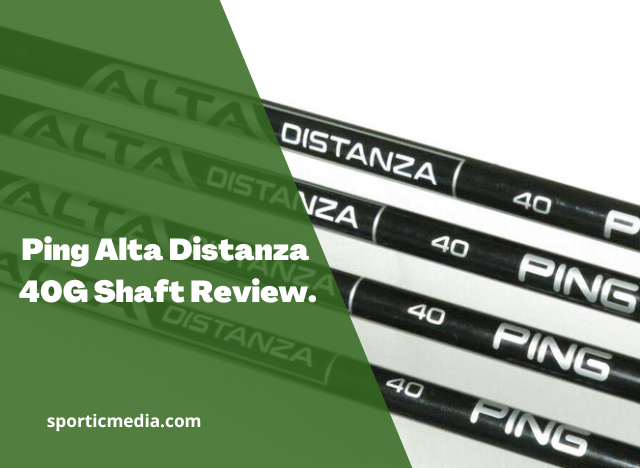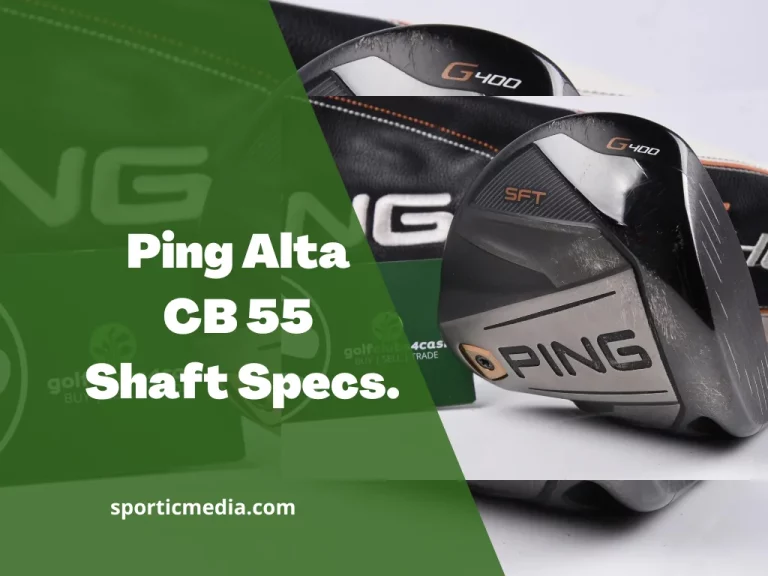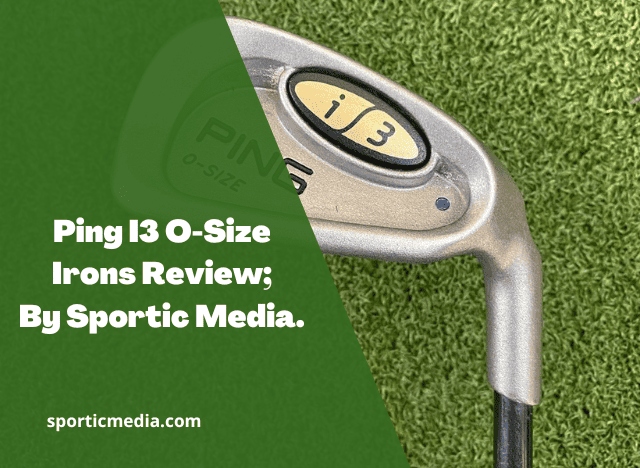Golfers are always on the lookout for the best clubs that can help them improve their game, and one line that has stood out in the golfing world is the Ping Eye 2 irons. These irons were launched in the 1980s and have since become an icon in the game of golf. The Eye 2 irons are renowned for their innovative design, improved accuracy, and longer distances.
Table of Contents
What is the History of Ping Eye 2 Irons?
These irons were first introduced in 1982, and the technology used in their design made them stand out from other clubs of their time. The Eye 2 irons were created to cater to the needs of golfers of all skill levels.
The irons were designed to be forgiving, meaning that they could help players hit the ball straighter and more accurately, even if they didn’t have perfect swings. The Eye 2 irons also had a perimeter weighting system, which helped to improve their performance.
What are Ping Eye 2 Iron Specs?
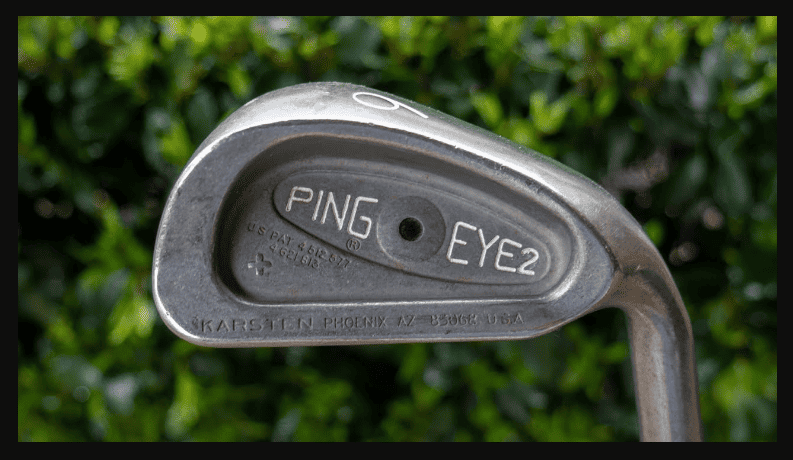
| Iron | Loft (°) | Lie (°) | Length (“) |
|---|---|---|---|
| 1 | 16 | n/a | 39.75 |
| 2 | 18.5 | n/a | 39.25 |
| 3 | 21.5 | n/a | 38.75 |
| 4 | 25 | n/a | 38.25 |
| 5 | 28.5 | n/a | 37.75 |
| 6 | 32 | n/a | 37.25 |
| 7 | 36 | n/a | 36.75 |
| 8 | 40 | n/a | 36.25 |
| 9 | 45 | n/a | 35.75 |
| PW | 50.5 | n/a | 35.5 |
| SW | 57.5 | n/a | 35.25 |
| LW | 61 | n/a | 35 |
Loft Options:
- These irons offer a wide range of loft options, catering to different player levels.
- Loft options include wedges and long irons, each designed to enhance performance.
- The Eye 2 Sand Wedge, with loft ranging from 54-57°, excels in chip shots, sand traps, and delicate shots around the greens.
- Higher loft in the sand wedge enables precise control of trajectory, crucial for challenging bunker shots.
Club Length:
- The Eye 2 irons adhere to industry standards for consistent club lengths, ensuring a seamless transition from one club to another.
- Consistent club lengths provide a similar feel and swing mechanics throughout the set.
Clubhead Design:
- The Eye 2 irons feature a cavity-back design with a hollowed-out portion at the back.
- This design increases the Moment of Inertia (MOI) for enhanced forgiveness, ensuring better accuracy even on off-center hits.
- Weight redistribution to the club head’s perimeter improves the sweet spot and minimizes the impact of mishits.
- Small clubhead size offers a balance between playability and control, allowing golfers to shape shots with ease.
Shaft Options:
- Numerous shaft options are available to accommodate various swing characteristics and preferences.
- Options include different flexes, weights, and materials for customized feel, trajectory, and overall club performance.
- Customization options for shaft length allow players to adjust clubs to their preferences.
- Custom fitting services are offered to match players’ swing features and playing style with the right shaft option.
Grips:
- These irons feature premium grips designed for maximum comfort and traction.
- Various grip options cater to different grip preferences and hand sizes.
- Selecting the appropriate grip material and size is crucial for a secure and comfortable hold on the club during the swing.
These irons are renowned for their enduring quality and superior performance on the golf course, and they are thoughtfully designed with attention to detail, offering golfers a range of benefits, including forgiveness, shot-shaping capabilities, and precision in various scenarios.
The Eye 2 Sand Wedge Loft, in particular, stands out for its effectiveness in chip and bunker shots. With consistent club lengths, versatile shaft options, and premium grips, Eye 2 irons are a confident choice for golfers looking to enhance their game and achieve better results on the course.
What are Ping Eye 2 Black Dot specs?
Here’s a table summarizing the specifications of the Eye 2 black dot irons, along with a description of their key features:
| Club | Loft | Lie | Length |
|---|---|---|---|
| 2-iron | 16° | 64° | 39.75″ |
| 3-iron | 18.5° | 64° | 39.25″ |
| 4-iron | 21.5° | 64° | 38.75″ |
| 5-iron | 25° | 64° | 38.25″ |
| 6-iron | 28.5° | 64° | 37.75″ |
| 7-iron | 32° | 64° | 37.25″ |
| 8-iron | 36° | 64° | 36.75″ |
| 9-iron | 40° | 64° | 36.25″ |
| PW | 45° | 64° | 35.75″ |
| SW | 50.5° | 63° | 35.5″ |
| LW | 57.5° | 62° | 35.25″ |
Featuring a standard lie angle of 64 degrees, the Eye 2 black dot irons are ideally suited for golfers with a neutral swing. These irons come in standard lengths, but Ping offers custom fitting services to ensure that every golfer can tailor their clubs to match their unique swing characteristics.
What sets these irons apart is their forgiving cavity back design, making them an excellent choice for golfers of all skill levels, especially beginners and high handicappers. The forgiveness of these irons can help golfers improve their game by providing consistent and reliable performance.
If you’re in search of irons that deliver both durability and performance, these irons remain a standout choice, known for their lasting quality, forgiveness, and ability to help golfers play their best game.
Ping Eye 2 Black Dot loft chart
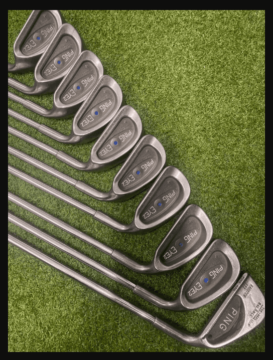
Here’s the loft chart for the Eye 2 black dot irons:
| Club | Loft Angle |
|---|---|
| 1 iron | 15 degrees |
| 2 iron | 18 degrees |
| 3 iron | 20 degrees |
| 4 iron | 23 degrees |
| 5 iron | 26 degrees |
| 6 iron | 30 degrees |
| 7 iron | 34 degrees |
| 8 iron | 38 degrees |
| 9 iron | 42 degrees |
| PW | 46 degrees |
| SW | 54 degrees |
Overall, the Black Dot irons were known for their innovative design and improved performance. They remain a popular choice among golfers who prefer classic clubs with a proven track record of success.
Ping Eye 2 Beryllium Copper Review: A Classic Golf Club Still Going Strong
sportic media
What are Ping Eye 2 sand wedge specs?
| Feature | Ping Eye 2 Sand Wedge |
|---|---|
| Loft | 57.5° |
| Lie Angle | 64.5° |
| Bounce | 12° |
| Shaft Length | 35.5 inches |
| Swingweight | D8 |
| Head Material | Beryllium Copper |
| Face | Cavity Back |
| Grooves | U Grooves |
| Finish | Chrome |
| Forgiveness | Very Forgiving |
| Distance | Good |
| Feel | Soft, Buttery Feel |
| Price | Affordable |
| Control | Excellent |
| Shaft Options | Ping Color Code |
The Ping Eye 2 sand wedge is available in the following shaft options:
- Black: Standard length, flex, and weight
- Blue: +1/2 inch length, standard flex and weight
- Red: +1 inch length, standard flex and weight
- Gold: -1/2 inch length, standard flex and weight
- Green: -1 inch length, standard flex and weight
The Eye 2 sand wedge is a great choice for golfers of all skill levels. It is a forgiving and easy-to-hit wedge that provides excellent control.
What are Ping Eye 2 beryllium copper specs?
| Feature | Ping Eye 2 Beryllium Copper |
|---|---|
| Loft | 3-PW: 19° to 40° |
| Lie Angle | 3-PW: 60.5° to 64° |
| Length | 3-PW: 38.5 inches to 36.75 inches |
| Swingweight | 3-PW: D4 to PW |
| Head Material | Beryllium Copper |
| Face | Cavity Back |
| Grooves | U Grooves |
| Finish | Chrome |
| Forgiveness | Very Forgiving |
| Distance | Good |
| Feel | Soft, Buttery Feel |
| Price | Affordable |
| Control | Excellent |
| Shaft Options | Ping Color Code |
| Shaft Material | Steel |
Note: The Ping Eye 2 Beryllium Copper irons were only produced for a short period of time in the early 1980s, so they are relatively rare. They are also a bit more expensive than other Ping Eye 2 irons, but they are known for their durability and performance.
What are Ping eye 2 blue dot irons specs?
| Feature | Ping Eye 2 Blue Dot Irons |
|---|---|
| Loft | 3-PW: 19° to 40° |
| Lie Angle | 3-PW: 60.5° to 64° |
| Length | 3-PW: 38.5 inches to 36.75 inches |
| Swingweight | 3-PW: D4 to PW |
| Head Material | Stainless Steel |
| Face | Cavity Back |
| Grooves | U Grooves |
| Finish | Chrome |
| Forgiveness | Very Forgiving |
| Distance | Good |
| Feel | Soft, Buttery Feel |
| Price | Affordable |
| Control | Excellent |
| Shaft Options | Ping Color Code |
| Shaft Material | Steel |
| Dot Color | Blue |
The Ping Eye 2 Blue Dot irons have a slightly different lie angle and shaft length than the standard Ping Eye 2 irons. They are also known for being a bit softer than the standard Ping Eye 2 irons.
The Ping Eye 2 Blue Dot irons are a great choice for golfers of all skill levels. They are a forgiving and easy-to-hit iron set that provides excellent control.
What Ping Eye 2 Irons are illegal?
Eye 2 irons with square grooves were found to be non-conforming to USGA regulations in the 1990s. The grooves on the irons were deemed to provide an unfair advantage by allowing players to generate more spin on their shots, providing greater control over the ball.
The USGA instituted a rule change in 1993 to make the Eye 2 irons with square grooves illegal for play on the PGA Tour and in USGA-sanctioned events.
However, the original Eye 2 irons with V-shaped grooves remain legal for play, and the controversy over the square grooves only applies to competitive play governed by USGA rules.
Ping Eye 2 Lofts Vs. New Clubs comparison
The loft angles for these irons were standard for their time, but how do they compare to the loft angles of newer clubs?
In general, newer irons tend to have stronger lofts than older irons, which means that the loft angles are lower. This is because newer irons are designed with the goal of providing greater distance, and a lower loft angle can help achieve that. For example, a modern 7-iron might have a loft angle of 30 degrees, compared to the 34 degrees of the Ping Eye 2 7-iron.
However, it’s worth noting that loft angle is just one factor that affects distance. The design of the clubhead, the shaft, and the golfer’s swing all play a role in how far the ball will travel. In fact, some newer irons might have stronger lofts but still provide similar or even less distance than older irons because of differences in their design and construction.
Another factor to consider is the golfer’s personal preference and skill level. Some golfers may prefer the feel and performance of older irons, while others may prefer newer clubs with stronger lofts. It ultimately comes down to individual preference and what works best for each golfer.
In summary, while newer clubs generally have stronger lofts than older clubs like the Ping Eye 2 irons, loft angle is just one factor that affects distance. The design of the clubhead, the shaft, and the golfer’s swing all play a role in how far the ball will travel. It’s important for golfers to try out different clubs and find the ones that work best for them.
Ping I3 O-Size Irons Review; By Sportic Media
sportic media
Conclusion
These irons are a classic line of golf clubs that have stood the test of time. Their innovative design and improved performance have made them an icon in the golfing world, and they continue to influence the design of clubs today. If you’re looking for a set of clubs to help you hit better shots and improve your game, these irons are worth trying.
Discover the meticulous and expert-driven process behind our product reviews at Sportic Media. Our comprehensive guide, led by industry veterans, ensures you get the most reliable and detailed insights into golf equipment. Dive into our methodical approach by visiting How We Test Products at Sportic Media: A Comprehensive Guide
.

